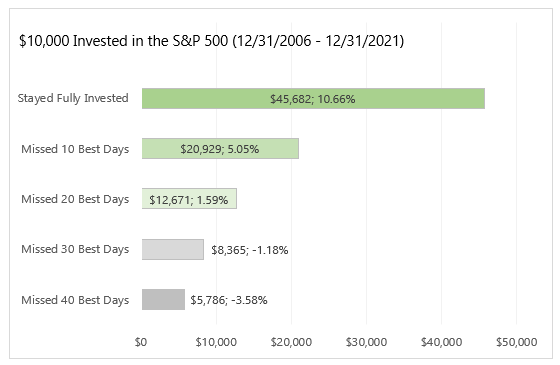The Federal Reserve and Market Volatility
Written September 30, 2022. By JD Wolfsberg:
Background
By the end of 2021 the Federal Reserve began to realize that inflation was no longer “transitory” and they were in fact falling behind in curbing price increases. As we entered 2022, the invasion of Ukraine by Russia added fuel to the inflation fire as commodity prices spiked from a disruption in energy and food. As a result, the Federal Reserve has embarked on the most aggressive rate hiking cycle since the 1980s, to combat inflation.
The Federal Reserve (the Fed) increased the Federal Funds Rate by another 0.75% at their September meeting in response to what has become widespread inflation throughout the economy. This lifted the Federal Funds Rate to a range of 3% – 3.25%, the highest target range since the Financial Crisis in 2008.
Risk markets are attempting to price in higher interest rates, a slowing economy as well as geopolitical tensions. The benchmark ‘risk-free rate’, which is driven by the Fed’s actions, is used as a starting point for discounting assets to arrive at their present value. All else equal, a higher discount rate results in lower equity valuations, tighter corporate bond and loan underwriting, and tighter consumer credit standards.
What Does This Mean For Markets?
The Fed’s actions and guidance flow through to equity markets and fixed income markets as valuations adjust to account for slower growth and rising interest rates. We do expect volatility to continue in the near-term as markets adjust to the idea that interest rates may be higher for longer to combat inflation. Unfortunately, the current geopolitical climate is also exacerbating inflation from further reduced supply of commodities such as energy and food. Other factors also may cause headwinds for equities in the near term such as further geopolitical tensions, mid-term elections, and tax-loss selling as we approach year-end.
Markets are forward looking and are attempting to price in the slower growth and more restrictive policy now that will filter through to the real economy in the near term. What we do want to note is that the market is facing ‘known unknowns’ meaning that the market is aware of the risks and attempting to price how long this period will last for. We do not believe this is a ‘black swan’ type of event such as occurred in 2008 where the market was caught off guard from a systemic problem it was not aware of.
The chart below shows the history of “bull” and “bear” markets, from 1929 through February 2022, which suggests that while the length and severity of each bear market varies, equity markets have shown their ability to recover.

What Does This Mean For My Portfolio?
Equities are long-term investments that will go through periods of volatility. Decisions on when to exit and reenter the market have proven to be extremely difficult to time for investors. The market can turn very quickly and missing the best days in the market can have a material impact on returns over the long-term. To illustrate this, we have provided a chart that indicates return differentials should investors miss some of the market’s best days:

Data Sourced From Putnam Investments
As you can see, the return differentials for being out of the market at the wrong time are substantial. While bear markets in equities are uncomfortable, history tells us that if the equity allocation is appropriate for an investor’s long-term financial plan, staying the course is the best course of action.
On the fixed income side, while an increase in interest rates results in lower bond prices it also provides an opportunity for the reinvestment of cashflows (coupons and principal maturities) at much higher rates. The yield curve below shows where treasury and single A corporate bonds are trading now versus the beginning of the year – a substantial increase. This should allow fixed income portfolios to provide a more meaningful contribution to the overall return of a balanced portfolio.

Date Sourced from Bloomberg
We realize the current sell-off in both the equity and fixed income markets can cause great anxiety to investors so we wanted to reference some market history. While we cannot say for certain that the drawdown in equities is close to an end, history suggests that we may have experienced the worst of the selloff. Over the last 17 bear markets (20% or more decline in the S&P Index) equity markets were higher in the subsequent 12 months 82% of the time (over a 36 month period this increased to 94% of the time). On the fixed income side, while prices have declined the reinvestment of cashflows will allow portfolio yields to reset to higher levels resulting in higher income for investors.
We are aware of the volatility experienced by investors and are always available to discuss the markets and how they may impact portfolios. We do believe that this period of volatility will pass and history tells us that the markets will recover. Please feel free to reach out to our team with any questions you may have. We continue to appreciate the trust and confidence you place with us.
